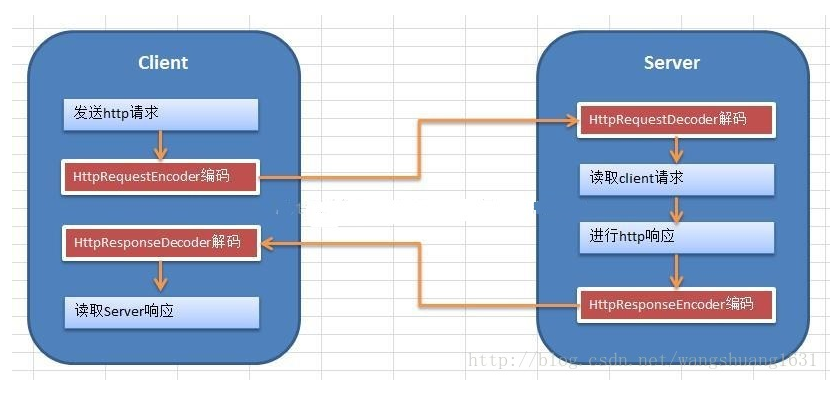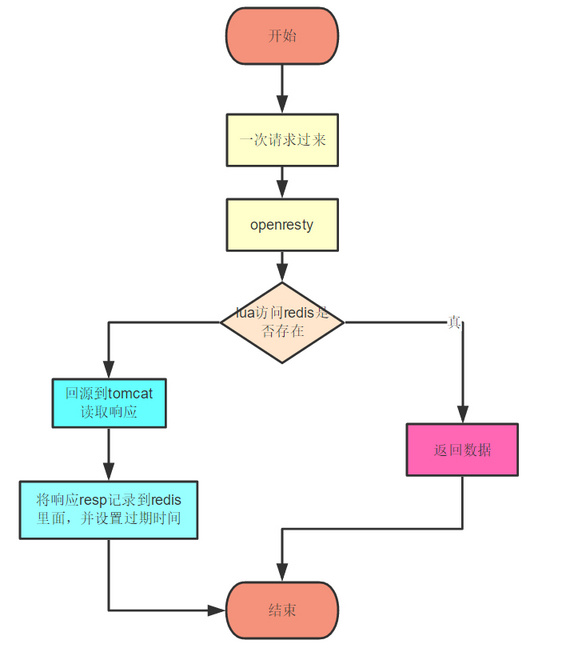作者:Zephery
个人网址:http://www.wenzhihuai.com
本文为作者原创,转载请注明出处:https://www.cnblogs.com/w1570631036/p/9665385.htm
自上次使用Openresty+Lua+Nginx的来加速自己的网站,用上了比较时髦的技术,感觉算是让自己的网站响应速度达到极限了,直到看到了Netty,公司就是打算用Netty来替代Openresty这一套,所以,自己也学了好久,琢磨了好一趟才知道怎么用,现在用来写一套HTTP代理服务器吧,之后再测试一下性能。
之前相关的文章如下:
【网页加速】lua redis的二次升级
使用Openresty加快网页速度
一、Netty中的HTTP
参考自《Netty实战》
一个完整的HttpRequest请求
FullHttpRequest:
HTTP Request 第一部分是包含的头信息
HttpContent 里面包含的是数据,可以后续有多个 HttpContent 部分
LastHttpContent 标记是 HTTP request 的结束,同时可能包含头的尾部信息
完整的 HTTP request
一个完整的HttpResponse请求
FullHttpResponse:
HTTP response 第一部分是包含的头信息
HttpContent 里面包含的是数据,可以后续有多个 HttpContent 部分
LastHttpContent 标记是 HTTP response 的结束,同时可能包含头的尾部信息
完整的 HTTP response
二、Netty实现HTTP代理服务器的流程
在实现Http代理服务器之前,我们先来查看一下Netty实现代理服务器的完整流程:
Netty的Http服务的流程是:
1、Client向Server发送http请求,在通常的情况中,client一般指的是浏览器,也可以由自己用netty实现一个客户端。此时,客户端需要用到HttpRequestEncoder将http请求进行编码。
2、Server端对http请求进行解析,服务端中,需要用到HttpRequestDecoder来对请求进行解码,然后实现自己的业务需求。
3、Server端向client发送http响应,处理完业务需求后,将相应的内容,用HttpResponseEncoder进行编码,返回数据。
4、Client对http响应进行解析,用HttpResponseDecoder进行解码。
而Netty实现Http代理服务器的过程跟上面的所说无意,只不过是在自己的业务层增加了回源到tomcat服务器这一过程。结合上自己之前实现过的用OpenResty+Nginx来做代理服务器这一套,此处的Netty实现的过程也与此类似。此处粘贴一下OpenResty+Nginx实现的流程图:
而使用了Netty之后,便是将中间的OpenResty+Nginx换成了Netty,下面我们来看一下具体的实现过程。
三、主要代码如下:
HttpServer
public class HttpServer { public void start(int port) throws Exception {
EventLoopGroup bossGroup = new NioEventLoopGroup();
EventLoopGroup workerGroup = new NioEventLoopGroup(); try {
ServerBootstrap b = new ServerBootstrap();
b.group(bossGroup, workerGroup)
.handler(new LoggingHandler(LogLevel.DEBUG))
.channel(NioServerSocketChannel.class)
.childHandler(new ChannelInitializer<SocketChannel>() { @Override
public void initChannel(SocketChannel ch)
throws Exception { // server端发送的是httpResponse,所以要使用HttpResponseEncoder进行编码
ch.pipeline().addLast( new HttpResponseEncoder()); // server端接收到的是httpRequest,所以要使用HttpRequestDecoder进行解码
ch.pipeline().addLast( new HttpRequestDecoder());
ch.pipeline().addLast( new HttpServerHandler()); //增加自定义实现的Handler
ch.pipeline().addLast(new HttpServerCodec());
}
}).option(ChannelOption.SO_BACKLOG, 128)
.childOption(ChannelOption.SO_KEEPALIVE, true);
ChannelFuture f = b.bind(port).sync();
f.channel().closeFuture().sync();
} finally {
workerGroup.shutdownGracefully();
bossGroup.shutdownGracefully();
}
} public static void main(String[] args) throws Exception {
HttpServer server = new HttpServer();
server.start(8080);
}
}HttpServerHandler
@Slf4jpublic class HttpServerHandler extends ChannelInboundHandlerAdapter { private RedisUtil redisUtil = new RedisUtil(); @Override
public void channelRead(ChannelHandlerContext ctx, Object msg)
throws Exception { if (msg instanceof HttpRequest) {
DefaultHttpRequest request = (DefaultHttpRequest) msg;
String uri = request.uri(); if ("/favicon.ico".equals(uri)) { return;
}
log.info(new Date().toString());
Jedis jedis = redisUtil.getJedis();
String s = jedis.get(uri); if (s == null || s.length() == 0) { //这里我们的处理是回源到tomcat服务器进行抓取,然后
//将抓取的内容放回到redis里面
try {
URL url = new URL("http://119.29.188.224:8080" + uri);
log.info(url.toString());
URLConnection urlConnection = url.openConnection();
HttpURLConnection connection = (HttpURLConnection) urlConnection;
connection.setRequestMethod("GET"); //连接
connection.connect(); //得到响应码
int responseCode = connection.getResponseCode(); if (responseCode == HttpURLConnection.HTTP_OK) {
BufferedReader bufferedReader = new BufferedReader(new InputStreamReader
(connection.getInputStream(), StandardCharsets.UTF_8));
StringBuilder bs = new StringBuilder();
String l; while ((l = bufferedReader.readLine()) != null) {
bs.append(l).append("\n");
}
s = bs.toString();
}
jedis.set(uri, s);
connection.disconnect();
} catch (Exception e) {
log.error("", e); return;
}
}
jedis.close();
FullHttpResponse response = new DefaultFullHttpResponse(
HTTP_1_1, OK, Unpooled.wrappedBuffer(s != null ? s
.getBytes() : new byte[0]));
response.headers().set(CONTENT_TYPE, "text/html");
response.headers().set(CONTENT_LENGTH,
response.content().readableBytes());
response.headers().set(CONNECTION, HttpHeaderValues.KEEP_ALIVE);
ctx.write(response);
ctx.flush();
} else { //这里必须加抛出异常,要不然ab测试的时候一直卡住不动,暂未解决
throw new Exception();
}
} @Override
public void channelReadComplete(ChannelHandlerContext ctx) throws Exception {
ctx.flush();
} @Override
public void exceptionCaught(ChannelHandlerContext ctx, Throwable cause)
throws Exception {
ctx.close();
}
}四、性能测试
下面的是ab测试,在1GHz、2G内存的centos7机器(阿里云服务器)下进行测试,测试命令ab -c 100 -n 10000 localhost:8000/,并发数为100,总数为10000。
性能:
整体响应时间的分布比(单位:ms):
看完之后,我自己也震惊了,Netty实现的不仅稳定、吞吐率还比OpenResty的高出一倍,OpenResty的居然还有那么多的失败次数,不知是不是我的代码的问题还是测试例子不规范,至今,我还是OpenResty的脑残粉。总体的来说,Netty实现的服务器性能还是比较强的,不仅能够快速地开发高性能的面向协议的服务器和客户端,还可以在Netty上轻松实现各种自定义的协议。
五、源码地址
https://github.com/Zephery/myway
参考:
《Netty实战》
共同学习,写下你的评论
评论加载中...
作者其他优质文章










